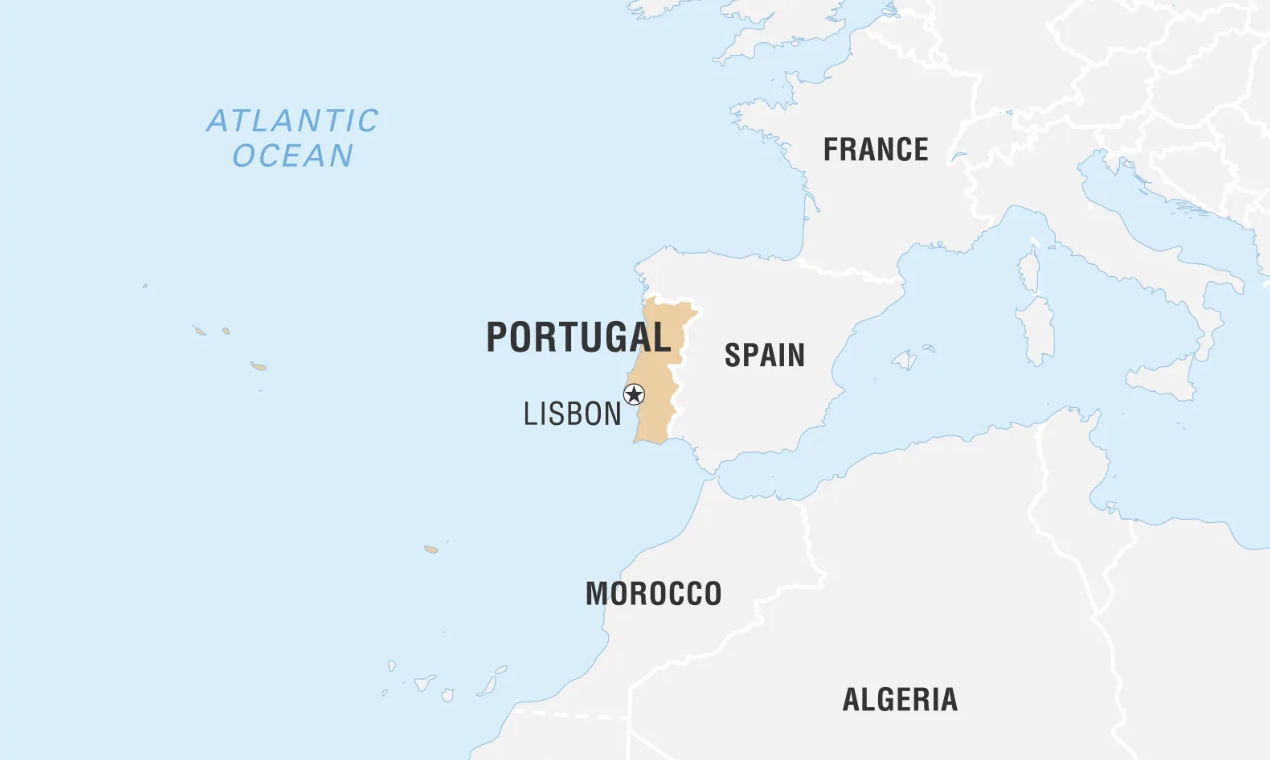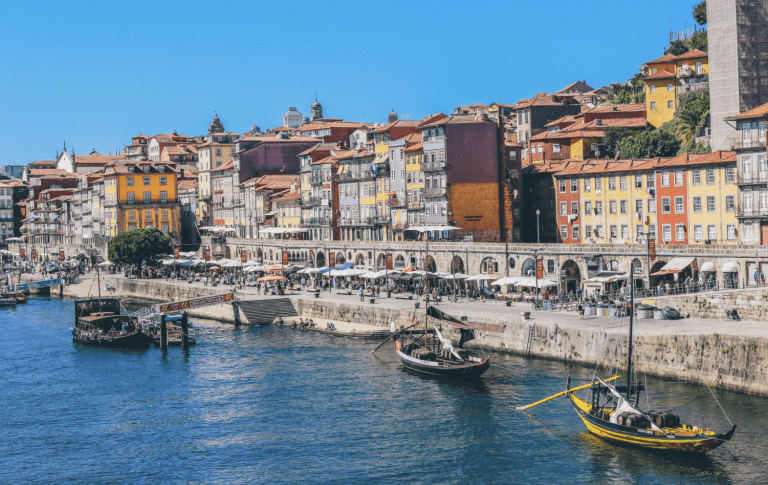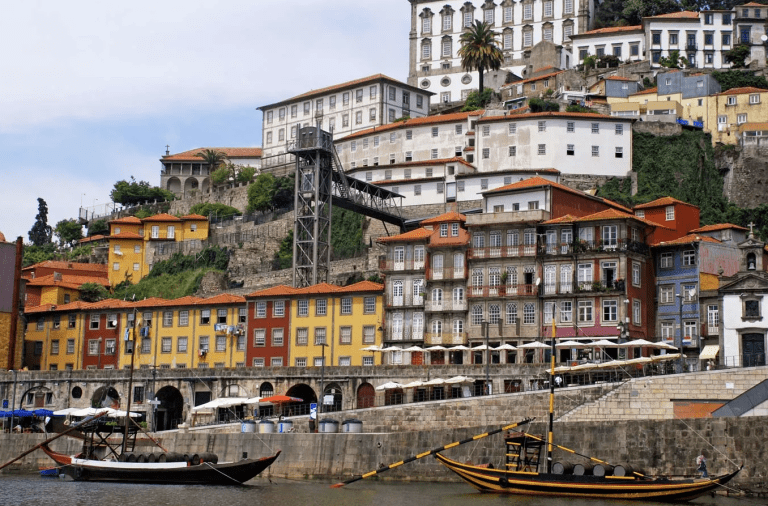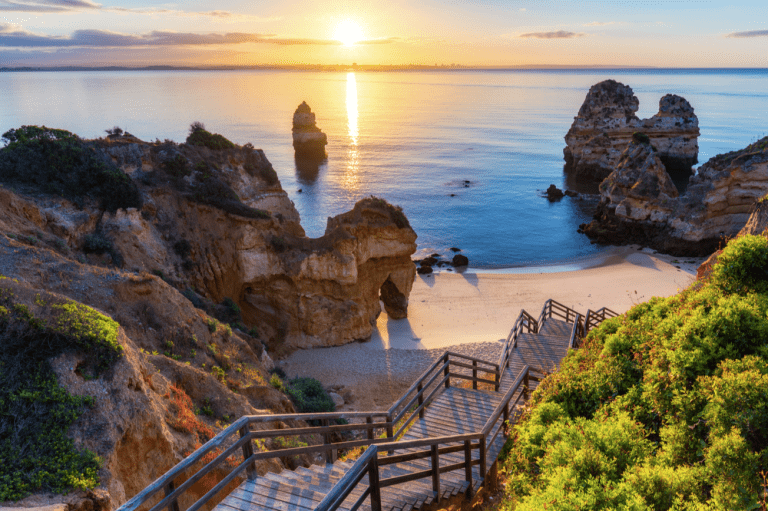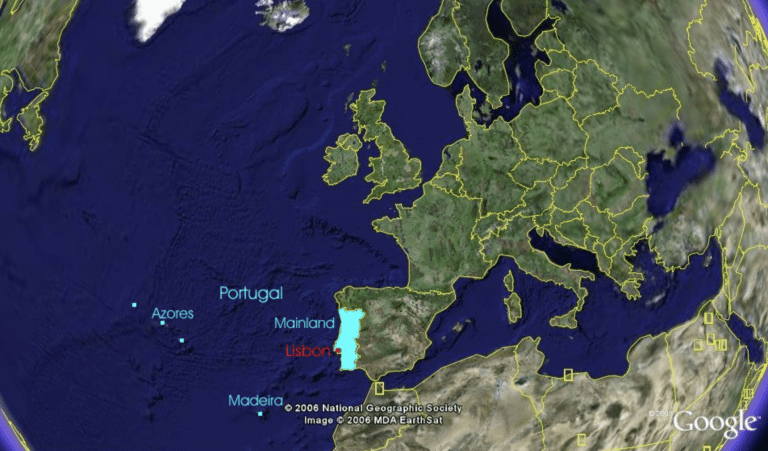When asking “how big is Portugal?”, one must consider not only the geographical size but also the cultural, historical, and socio-economic dimensions of this fascinating European city. Nestled on the Iberian Peninsula, Portugal’s diverse landscapes stretch across approximately 92,090 square kilometers.
The country’s demographic distribution presents a unique blend of urban and rural life with Lisbon being a vibrant hub. As we delve into its history, we uncover early settlements by Celtic Lusitani tribes and the profound impact of Roman rule on Portuguese culture.
In more recent times, Portugal has transformed from having Europe’s largest colonial empire to becoming a modern state post-revolution. Today it boasts an impressive tourism industry that significantly contributes to national economy employment rate while offering historic charm to international tourists.
Last but not least in understanding “how big is Portugal?” are its rich flora and fauna which contribute greatly to its ecological diversity. Let us embark on this journey through time and space as we explore what makes Portugal larger than life itself.
The Geographical Size and Landscape of Portugal
Portugal, a country rich in history and culture, is surprisingly compact. Despite its relatively small size of 92,345 square kilometers – slightly smaller than Indiana in the USA – this nation boasts an incredibly diverse landscape.
Comparison between the sizes of Portugal and other countries
If you were to compare the sizes of different countries worldwide, you’d find that Portugal ranks as the 110th largest country globally. It’s fascinating how such a geographically small nation can pack so much diversity within its borders.
Diversity in Portuguese landscapes
The geographical diversity within Portugal is truly remarkable. From cold rocky northern coasts to mountainous interiors that are sparsely settled yet incredibly scenic, there’s something for every type of traveler here.
In addition to these features, one cannot forget about Portugal’s impressive Atlantic coastline stretching for 837 kilometers. This long stretch offers breathtaking views with cliffs overlooking beautiful beaches – perfect spots for coastal scenery lovers or water sports enthusiasts.
Moving inland from the coastlines towards central regions like Alentejo and Beira Alta reveals another facet of Portuguese geography: rolling plains dotted with cork trees (an important part of the Portuguese economy due to their use in wine bottle stoppers), olive groves providing delicious olives used extensively in local cuisine, vineyards producing world-renowned wines, and picturesque hilltop villages offering panoramic vistas over the surrounding countryside… The list goes on.
A journey further northwards takes us into more rugged terrain dominated by mountains such as Serra da Estrela – the highest peak on the mainland standing at nearly two thousand meters above sea level. It offers opportunities for hiking and skiing during winter months while providing stunning views across the valleys below all year round.
Portugal may be small in size, but it is packed with diverse landscapes. From its rocky coasts and mountainous interiors to rolling plains and rugged mountains, there is something for every type of traveler to explore and enjoy in this compact country.
Demographics and Urban Life in Portugal
Portugal, a country with around 10 million people, is mostly populated along its beautiful Mediterranean coastlines. The Algarve and the capital city Lisbon are particularly popular for their lively urban vibes.
Population Distribution Across Portugal
The population in Portugal is diverse, with most people living near the coast. Northern regions like Porto have lower population densities due to their mountainous terrains, offering peaceful landscapes away from the city hustle.
In contrast, southern regions like Algarve and Lisbon attract more residents due to their pleasant climate and economic opportunities. These areas also benefit from a significant influx of tourists, boosting the local economy.
Vibrant Urban Life in Lisbon
Lisbon is not only an economic hub but also a cultural hotspot in Portugal. Known for its soulful Fado music and mouthwatering cuisine, this city appeals to people from all walks of life.
- Fado Music: Lisbon is home to authentic Fado performances, recognized by UNESCO as an Intangible Cultural Heritage. Experience this traditional Portuguese music genre at venues like Casa da Mouraria.
- Cuisine: Food lovers will be spoiled for choice in Lisbon. From seafood delicacies at Cervejaria Ramiro to satisfying your sweet tooth with Pasteis de Belem, there’s a delicious treat waiting around every corner.
- Economic Opportunities: Lisbon, as one of Europe’s leading tech hubs, offers ample career prospects, especially in the IT sector. It’s not just a tourist destination but also an attractive place for professionals.
Beyond its modern appeal, Lisbon’s rich history is reflected in well-preserved architectural landmarks like Torre de Belem and Mosteiro dos Jeronimos. Exploring the narrow cobblestone streets and the breathtaking views of the Tagus River below is truly mesmerizing.
Historical Influence on Modern-Day Portugal
The history of Portugal is like a crazy quilt woven with tales of ancient tribes, Roman rule, and Moorish conquests. Each era has left its mark on the nation’s culture, shaping it into the fabulous mix we see today.
Early settlements by Celtic Lusitani tribes
The first inhabitants of this region were the Celtic Lusitani tribes. They settled here during the first millennium BCE, bringing their own unique customs and traditions. These early settlers left a lasting impact on Portuguese culture, influencing everything from folk music to dance styles.
Impact of Roman Rule on Portuguese Culture
Roman rule came along after the Celtic Lusitani tribes, and boy, did they shake things up. The Romans introduced new architectural techniques, legal systems, and even the Latin language. These influences can still be seen today in the Portuguese language and legal system.
But wait, there’s more. The Romans also left behind tangible remnants like roads and aqueducts, as well as less visible but equally important influences such as the adoption of Catholicism. Talk about leaving a lasting impression.
Moorish Conquests and Their Influence
After the Romans, the Moors swooped in and took over Portugal for several centuries. They left their mark on the architecture, with unmistakable Moorish influences still visible today. Mmm, the scrumptious traditional dishes that have been handed down over time are truly something to savor. Yum.
With such a fascinating blend of cultures, it’s no wonder that exploring different regions within Portugal is such a rewarding experience. From ancient ruins to mouthwatering cuisine and beautiful coastlines, there’s something for everyone to enjoy.
Colonial Legacy & Political Leadership
Portugal: where exploration led to the birth of Europe’s biggest colonial empire. They uncovered unfamiliar territories, established commercial outposts, and colonized areas of Asia, Africa, and South America. Impressive, right? Learn more.
Establishment & Impact of Europe’s Largest Colonial Empire
The Age of Discovery in the 15th century changed the world forever. Portugal’s brave navigators sailed the seas, connecting isolated parts of the globe and kickstarting globalization. Vasco da Gama even found a shortcut to India. Talk about efficiency.
Portugal’s colonial empire lasted until the 1970s when decolonization movements gained momentum. But the influence of this empire can still be felt today, from culture to cuisine. It’s like a lasting souvenir.
Transformation into a Modern State Post-Revolution
In 1974, Portugal had a peaceful revolution called the Carnation Revolution. It brought democracy and major social changes, like land reforms and nationalizations. Talk about a makeover.
Under the leadership of President Marcelo Rebelo de Sousa and Prime Minister Antonio Costa, Portugal has seen significant social changes such as land reforms and nationalizations. They’re the dynamic duo shaping the country’s progress and preserving its cultural heritage. Rebelo de Sousa is a law professor turned politician with a down-to-earth approach, while Costa successfully managed economic recovery after a financial crisis. They’re like the Batman and Robin of Portuguese politics.
Tourism in Portugal: A Gem on the Iberian Peninsula
Portugal, a captivating destination on the Iberian Peninsula, continues to charm travelers from around the world. With its rich history, diverse landscapes, and vibrant cities like Lisbon – one of Europe’s most energetic hubs – tourism plays a vital role in this European city’s economy.
Boosting the Economy and Employment
The tourism industry in Portugal not only contributes significantly to the national GDP but also provides jobs for about six percent of the country’s workforce. It’s a great arrangement, in which tourism energizes economic growth and makes jobs accessible.
In fact, back in 1999, tourism accounted for nearly five percent of Portugal’s GDP alone. Since then, the sector has experienced consistent growth, positively impacting the overall Portuguese economy.
Historic Charm that Appeals to International Tourists
Portugal’s allure for international tourists goes beyond its sun-soaked beaches and delicious cuisine. The country’s historic charm is a major draw. Many cities have successfully preserved their historical character while seamlessly blending in modern amenities, making them particularly appealing destinations.
- Lisbon: Lisbon, a bustling European city, impresses visitors with its fusion of old-world charm and contemporary lifestyle. Visit Lisboa
- Oporto: Oporto (or Porto), famous worldwide for its wine production, is equally captivating with its medieval riverside district, narrow cobbled streets, and ancient houses. Visit Porto
- Sintra: Sintra offers a fairy-tale romance combined with architectural grandeur, with stunning palaces and castles set amidst lush greenery. Visit Sintra
Apart from these well-known spots, numerous other locations scattered throughout the mainland offer visitors a chance to explore lesser-known aspects of Portuguese culture and heritage, making every visit a truly enriching experience.
No matter where you choose to venture during your stay, always respect local customs and traditions, ensuring sustainable and responsible travel practices are followed at all times. By taking care to adhere to sustainable and responsible travel practices, we can ensure that future generations are able to benefit from the same stunning views as us.
Tourism in Portugal is a major contributor to the country’s economy, providing jobs and boosting GDP. The historic charm of cities like Lisbon, Oporto, and Sintra attracts international tourists who can also explore lesser-known aspects of Portuguese culture.
FAQs in Relation to How Big is Portugal
Portugal is about 92,090 square kilometers in size, which is pretty big for a country that’s often overshadowed by its neighbor, Spain. World Bank
When it comes to the United States, the state that comes closest to Portugal’s size is Indiana. So next time you’re in Indiana, imagine yourself exploring the beautiful landscapes of Portugal instead.
Conclusion
Portugal may be small in size, but it’s big on diverse landscapes, from stunning beaches to majestic mountains.
With its vibrant urban life in cities like Lisbon, Portugal’s population is spread across different regions, adding to its cultural richness and historical significance.
From ancient Celtic settlements to the influence of Roman rule, Portugal’s history has shaped its modern-day culture and politics.
Not to mention, Portugal’s colonial legacy and post-revolution transformations have made it a fascinating destination for tourists, contributing significantly to its economy and employment rate.

